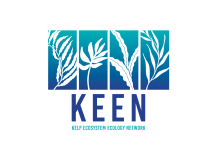MARINE HABITAT
Type of resources
Topics
Keywords
Contact for the resource
Provided by
Years
-
Data from multibeam echosounder surveys taken as part of the Ningaloo Outlook project were classified into various seafloor cover types according to their hardness, rugosity and depth. The classifications were validated with towed video ground truth where it was available. This dataset describes two AOIs which are explicitly part of the Ningaloo Outlook Deep Reefs project. Substratum classifications were applied using multibeam backscatter angular response curves along with rugosity as input to a maximum likelihood classifier. See original metadata record(s) and associated attached documents for accuracy estimates, alternate classification techniques, and additional surveyed areas. https://doi.org/10.25919/kssa-5b46 https://doi.org/10.25919/kttc-x397 https://doi.org/10.25919/8m65-7k26
-
Marine benthic habitat data for Tasmanian coastal waters from the LWM (Low water mark) to 40 metres in depth or 1.5 kms from shore. See 'Lineage' section of this record for full methodology and data dictionary. This data is also available via the Seamap Australia National Benthic Habitat Layer - a nationally consolidated benthic habitat map. https://metadata.imas.utas.edu.au/geonetwork/srv/eng/catalog.search#/metadata/4739e4b0-4dba-4ec5-b658-02c09f27ab9a
-
Data is PCR amplification results of southern rock lobster (Jasus edwardsii) faecal material tested for sea urchin DNA (using unique primers for Centrostephanus rodgersii and Heliocidaris erythrogramma) in an attempt to determine in situ rates of consumption of sea urchins by lobsters. An efficient and non-lethal method was used to source and screen lobster faecal samples for the presence of DNA from ecologically important sea urchins. Lobster faecal samples were collected from trap caught specimens sourced in winter & summer seasons over 2 years (2009-2011) within two no-take research reserves; declared specifically for the purpose of rebuilding large predatory-capable lobsters to assess the potential for predator-driven remediation of kelp beds on rocky reefs extensively overgrazed by sea urchins (North Eastern Tasmania) and reefs showing initial signs of overgrazing (South Eastern Tasmania). Data for molecular assays showed high variability in the proportion of lobsters testing positive to sea urchins, with significant variability detected across different years and seasons but this was found to vary depending on different lobster size-classes. Sea urchin DNA was also amplifiable from sediments and urchin faeces collected from the reef surface where urchins occurred in high abundance. Furthermore, positive sea urchin DNA assays were obtainable from lobster faeces after lobsteres were fed sediment and urchin faecal material. Rates of predation obtained with genetics tests can also be compared to independent rates of urchin losses given known lobster abundances within research reserves (and at control sites). Data of changes in urchin abundances and lobster abundances are therefore also lodged as part of this record.
-

This global meta-analysis documents data from underwater visual surveys used to determine the effect of kelp bed disturbance and canopy density on the abundance and structure of fish communities. Spatial, temporal and ontogenetic variability of many key fish species was examined at various levels of kelp disturbance at sites spanning a global temperate distribution. Rocky reef habitats and fisheries management regimes of sites were also examined as covariates. This data spans from 1984 to present. Note that Emma has completely fabricated this abstract, and requires direct input from KEEN.
-
Belt transect surveys (50m) were used to monitor the benthic community structure through time at experimental (lobster additions/ research reserve sites or abalone diver urchin culls) and control sites in eastern Tasmania. Measures of percentage cover of key algal guilds, percentage of reef grazed by sea urchins, number of sea urchins (Centrostephanus rodgersii, Heliocidaris erythrogramma), Abalone (Haliotis Rubra), Rock lobsters (Jasus edwardsii) and type of substratum were recorded.
 TemperateReefBase Geonetwork Catalogue
TemperateReefBase Geonetwork Catalogue